words, concepts, formulas, etc. and begin a word wall.
Create
charts and place them in a prominent place.Use color and patters to enhance learners.
Students connect new info with the learning walls.
FindSlide.org - это сайт презентаций, докладов, шаблонов в формате PowerPoint.
Email: Нажмите что бы посмотреть
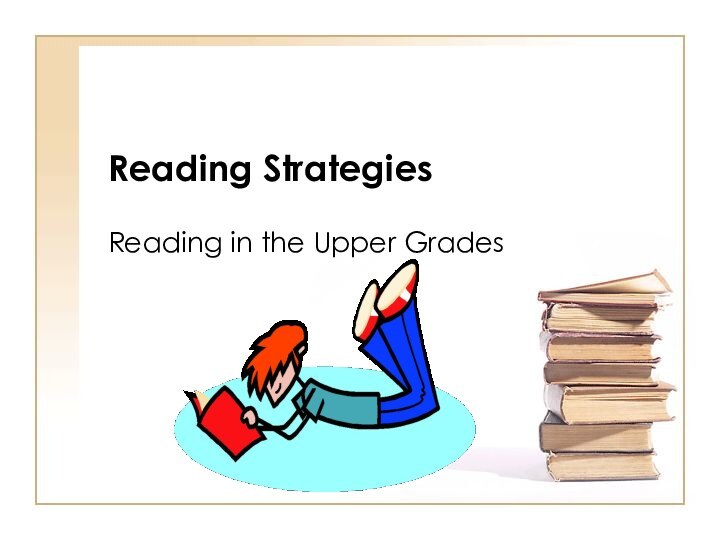
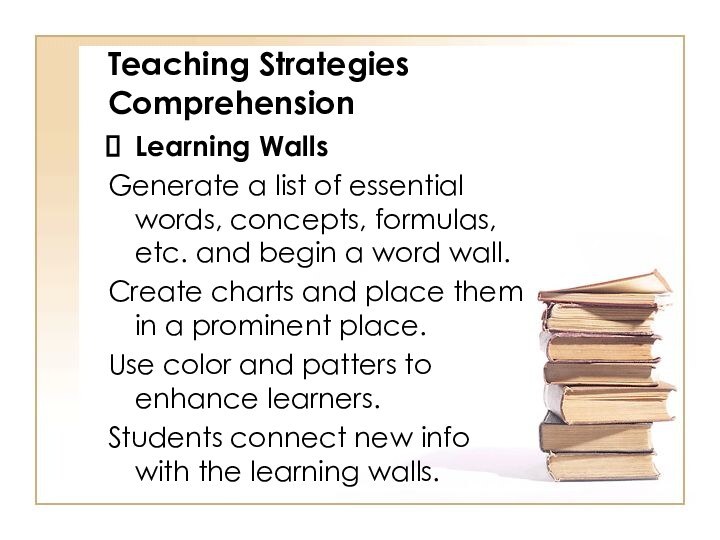
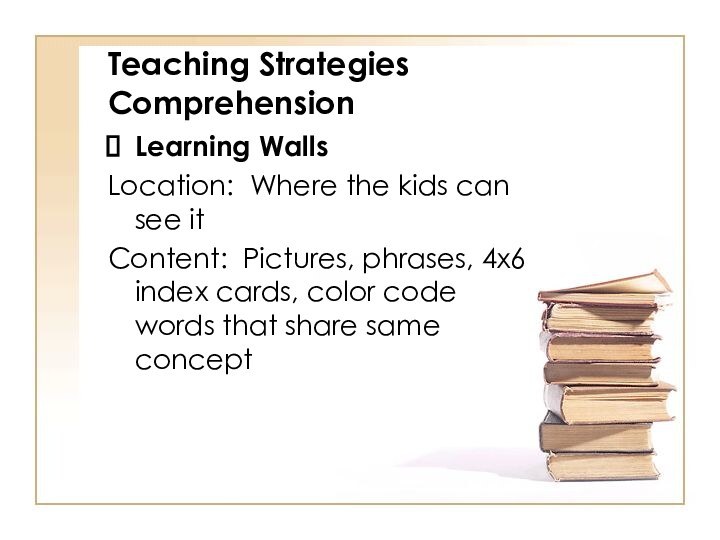
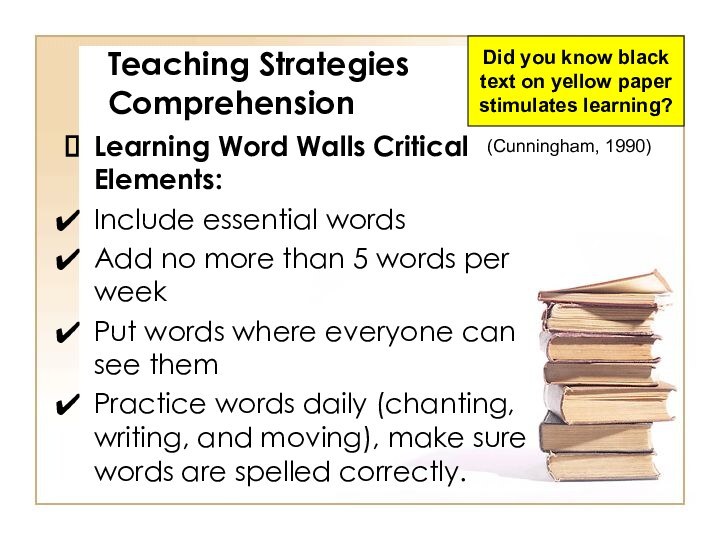
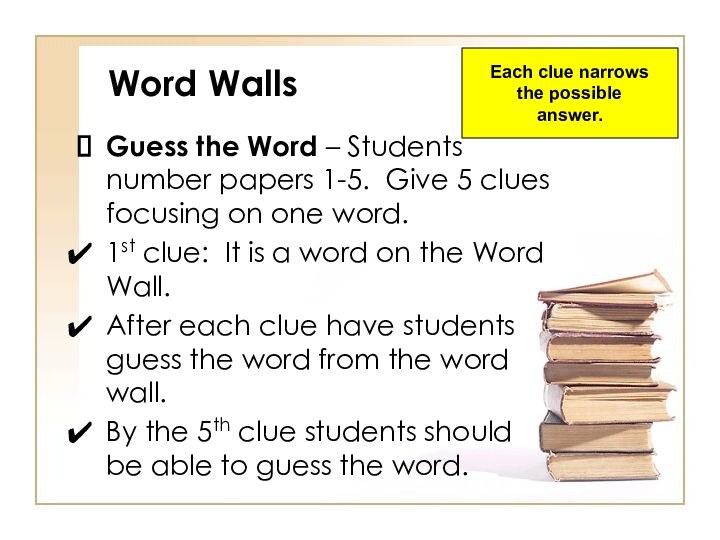
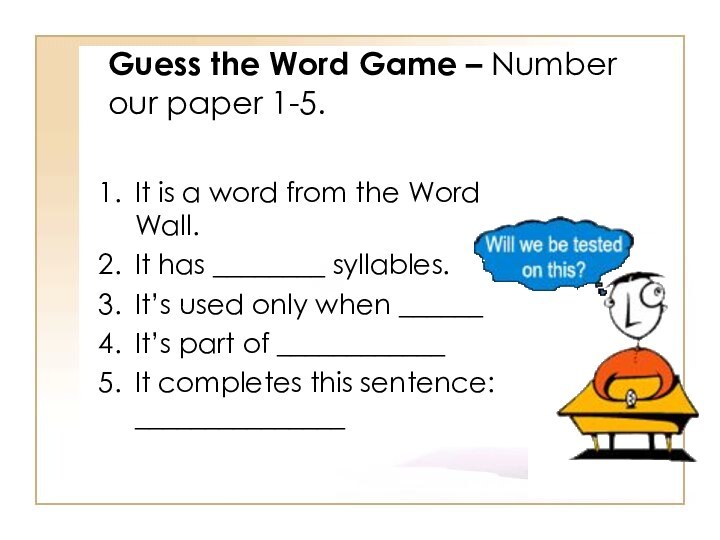

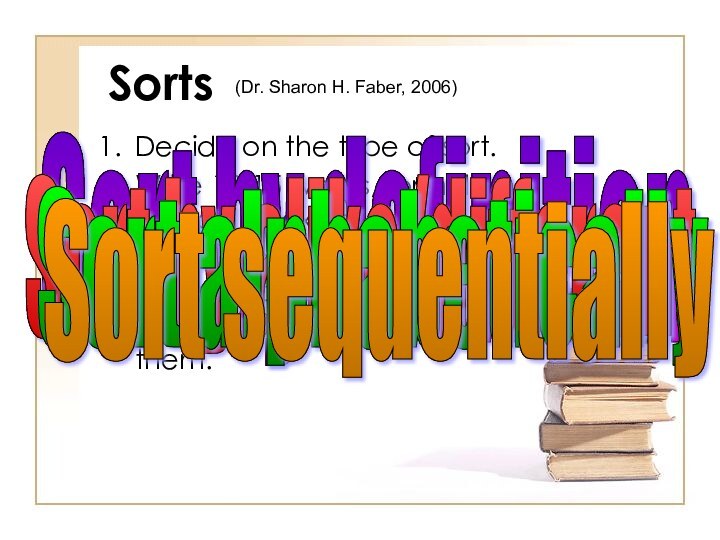
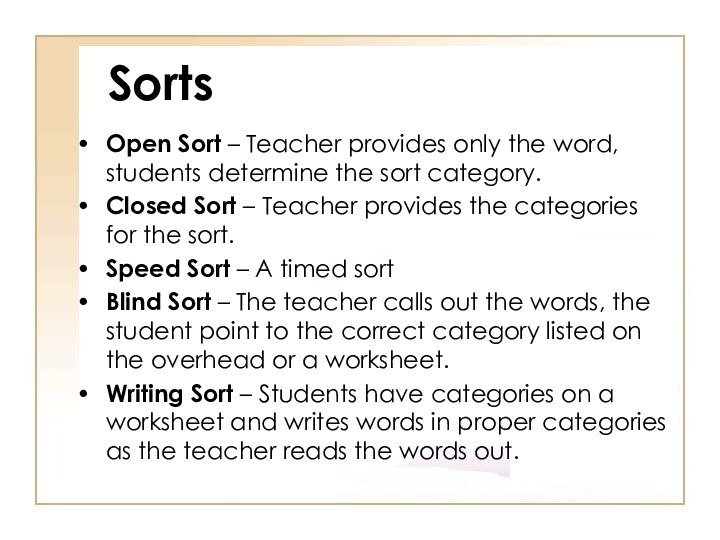
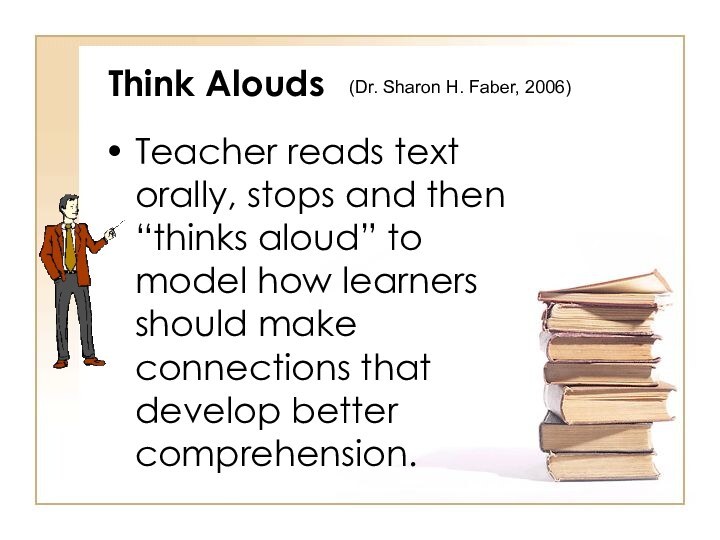
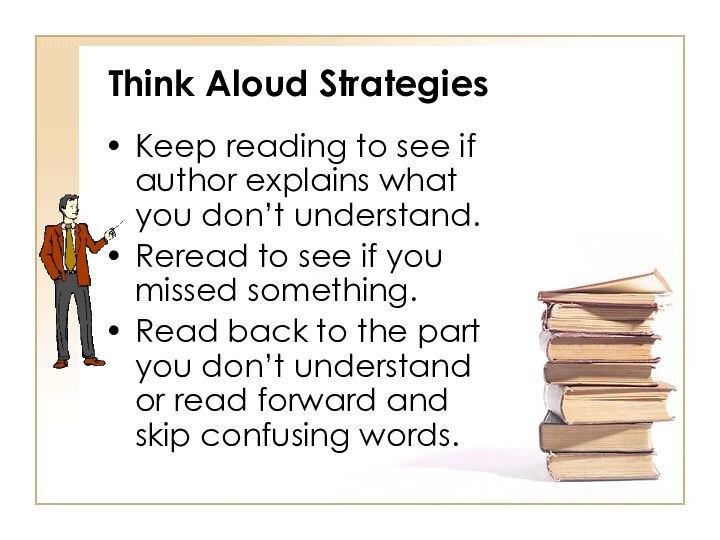
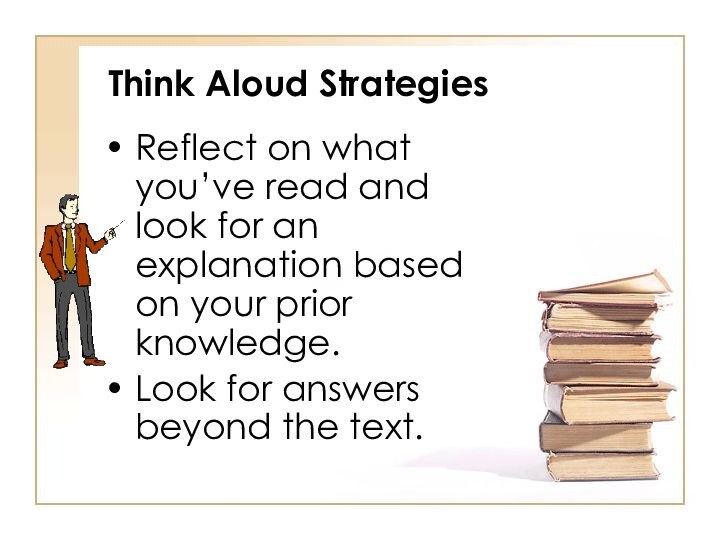
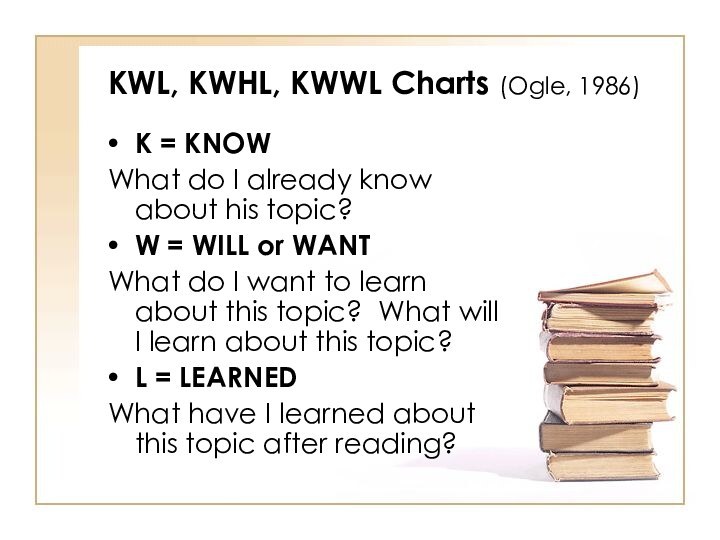
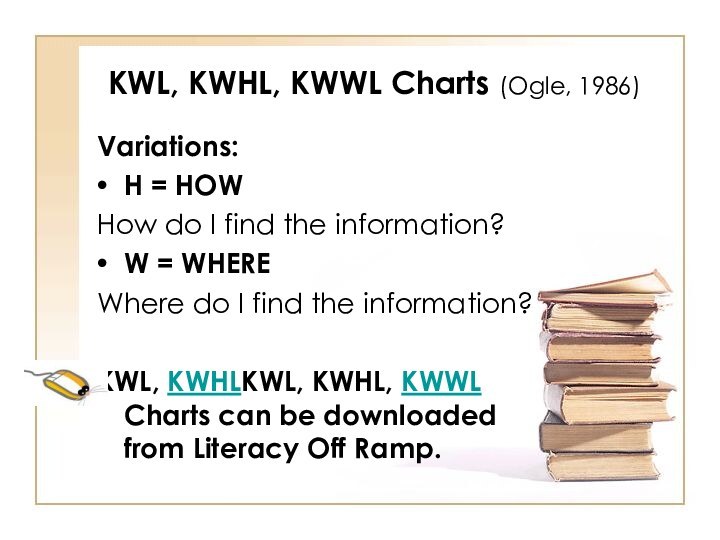

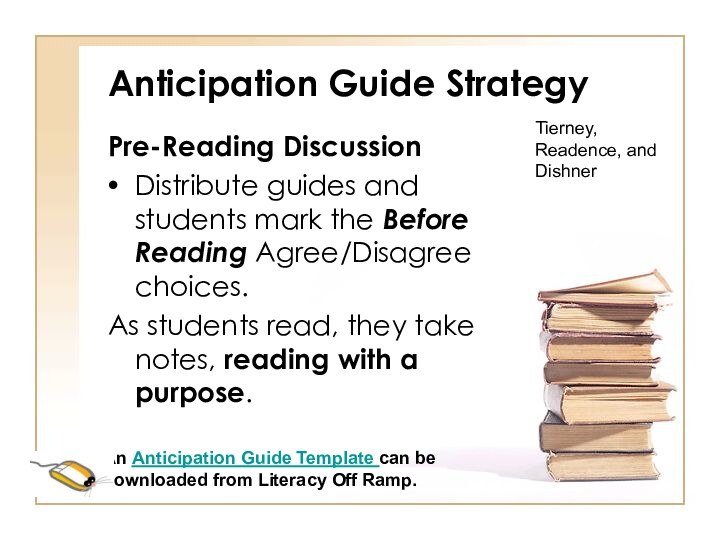


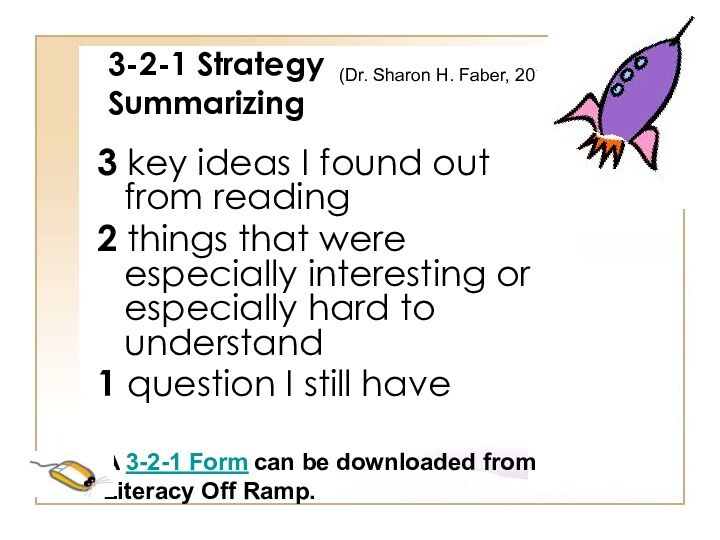
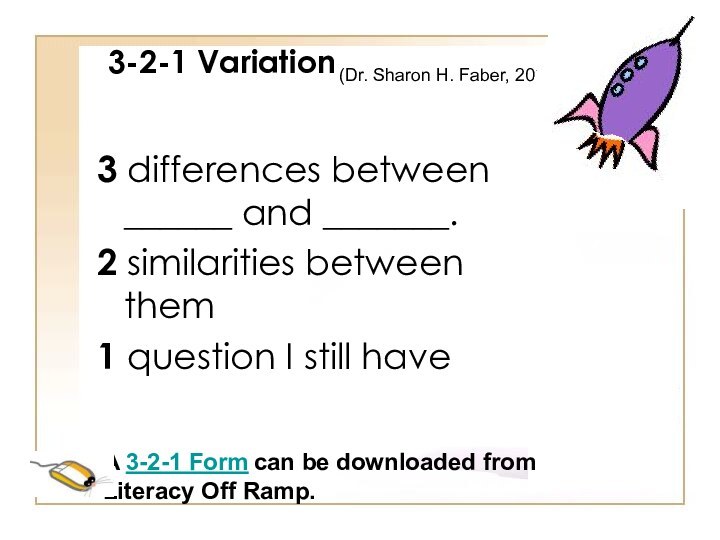
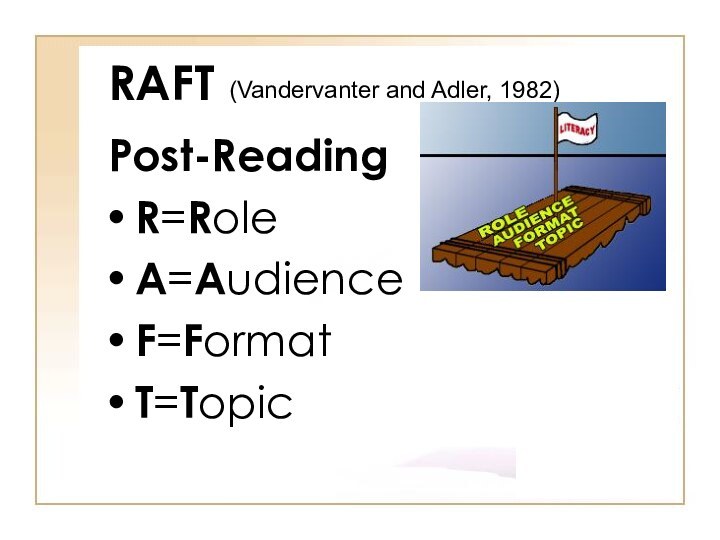
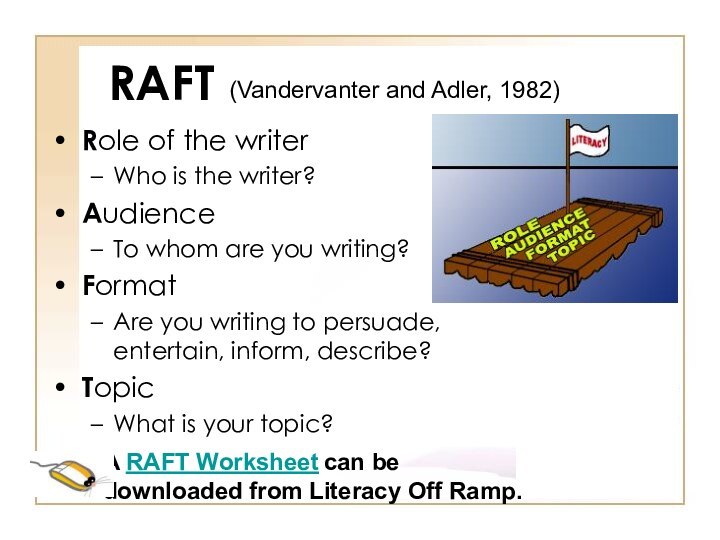
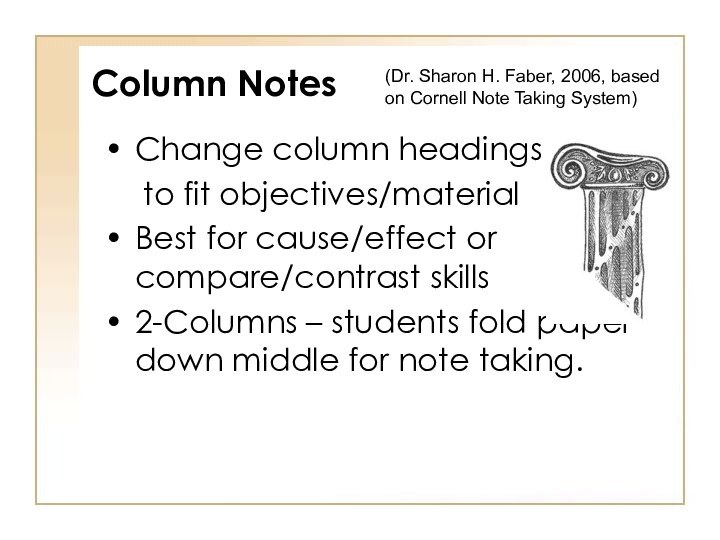
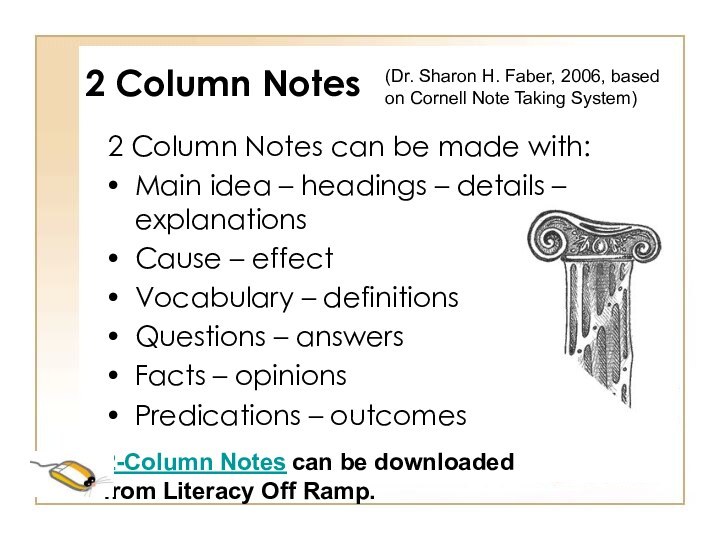

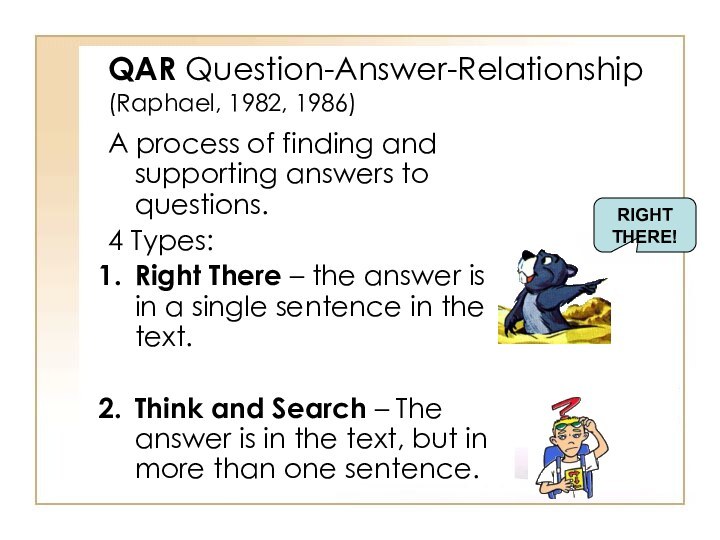
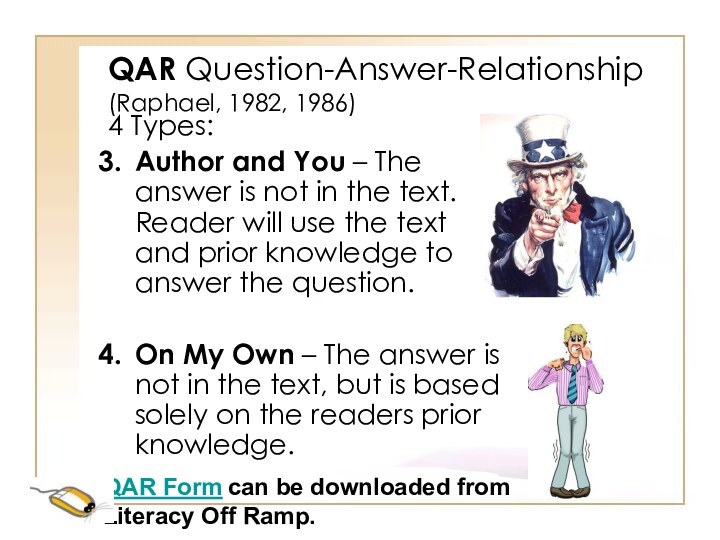
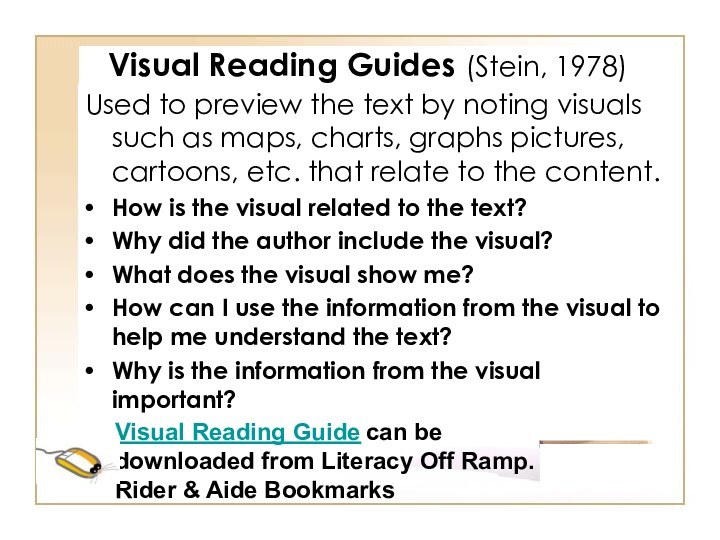
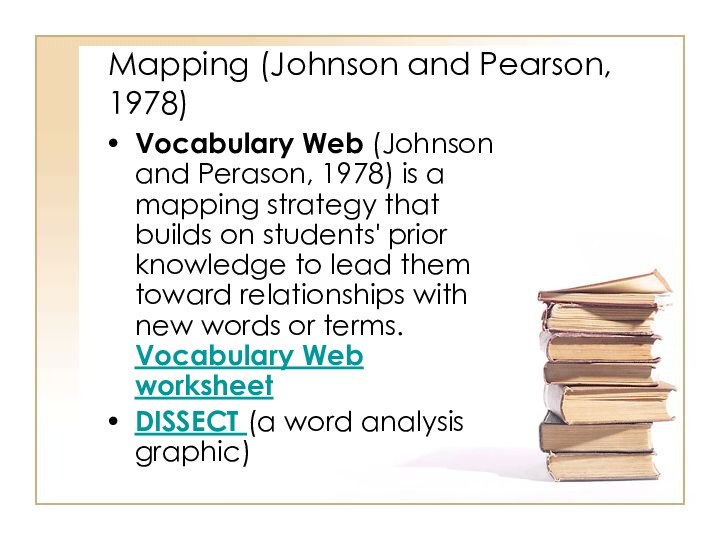
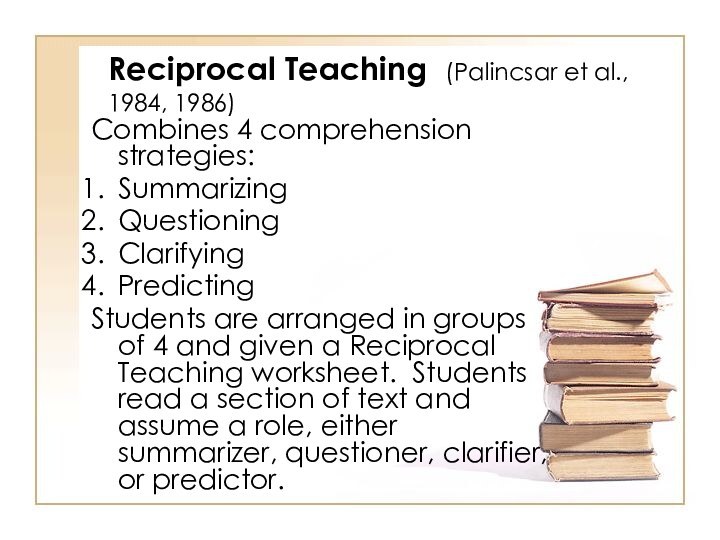
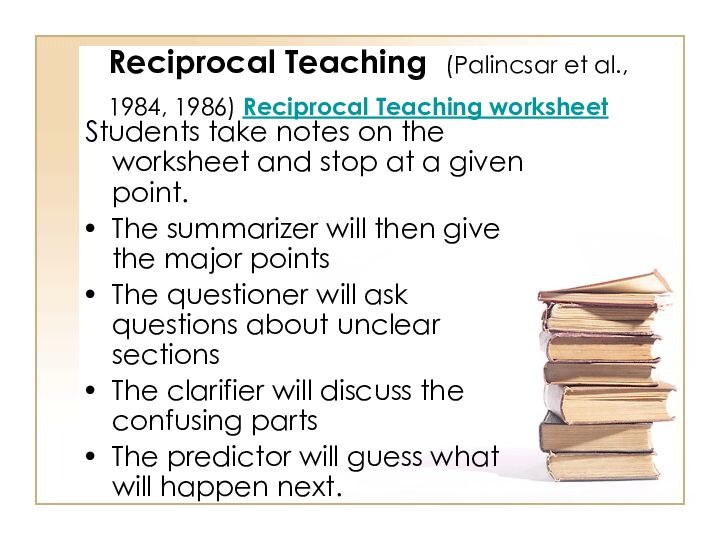
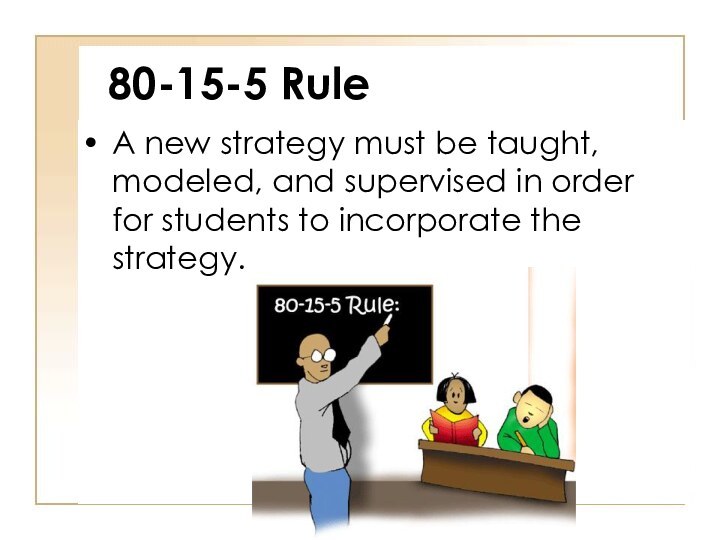
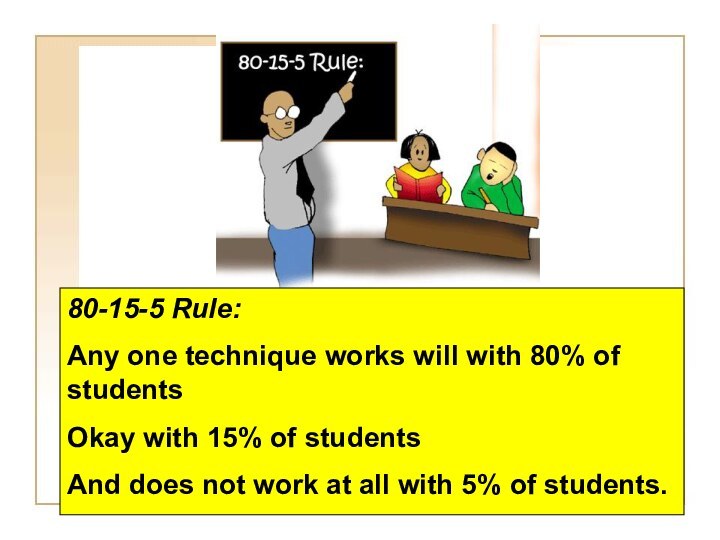
(Cunningham, 1990)
Did you know black
text on yellow paper
stimulates learning?
Each clue narrows
the possible
answer.
Make it harder…call out the definition, not the word.
(Dr. Sharon H. Faber, 2006)
Sort by definition
Sort by alike/different
Sort alphabetically
Sort sequentially
(Dr. Sharon H. Faber, 2006)
(Dr. Sharon H. Faber, 2006)
Tierney, Readence, and Dishner
An Anticipation Guide Template can be downloaded from Literacy Off Ramp.
Tierney, Readence, and Dishner
An Anticipation Guide Template can be downloaded from Literacy Off Ramp.
Tierney, Readence, and Dishner
An Anticipation Guide Template can be downloaded from Literacy Off Ramp.
A PIC Form can be downloaded from Literacy Off Ramp.
(Dr. Sharon H. Faber, 2006)
A 3-2-1 Form can be downloaded from Literacy Off Ramp.
(Dr. Sharon H. Faber, 2006)
(Dr. Sharon H. Faber, 2006)
(Vandervanter and Adler, 1982)
A RAFT Worksheet can be downloaded from Literacy Off Ramp.
(Dr. Sharon H. Faber, 2006, based on Cornell Note Taking System)
(Dr. Sharon H. Faber, 2006, based on Cornell Note Taking System)
2-Column Notes can be downloaded from Literacy Off Ramp.
3 Column Notes can be downloaded from Literacy Off Ramp.
RIGHT THERE!
QAR Form can be downloaded from Literacy Off Ramp.
Visual Reading Guide can be downloaded from Literacy Off Ramp. Rider & Aide Bookmarks